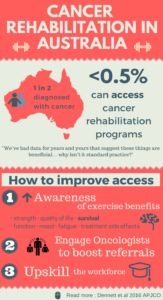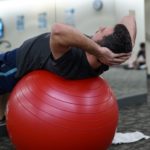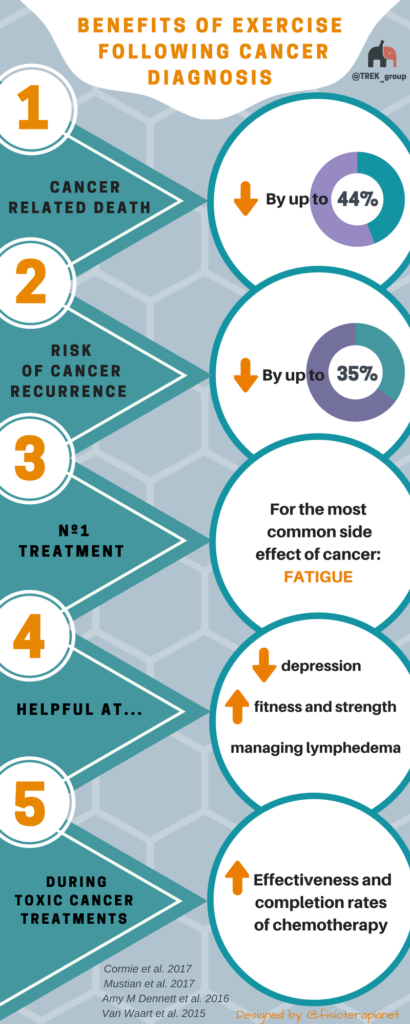 Why run oncology rehabilitation?
Why run oncology rehabilitation?
Oncology rehabilitation programs are an important aspect of clinical care for people diagnosed with cancer. People diagnosed with cancer may also be referred to as ‘cancer survivors’.
Cancer is extremely common in Australia. Promisingly, most people diagnosed with cancer now survive, however it is common for people to experience ongoing disability and disease burden following their medical treatment. In fact, cancer is the leading cause of disease burden in Australia.
Oncology rehabilitation programs provide an opportunity to offer patients a standardised, safe and effective means to undertake exercise training either before (prehabilitation), during or after (survivorship) their cancer treatment. There is compelling evidence that physical activity is associated with improvements in common cancer-related health outcomes including physical function, fatigue, anxiety and depression.
Working with patients with cancer requires specific knowledge and this website is designed to share such knowledge to fully qualified health professionals.
The main components of an oncology rehabilitation program are: 
- Patient assessment
- Exercise training
- Patient education – Exercise & Multidisciplinary
- Patient reassessment and follow-up plan

The primary goals of oncology rehabilitation for people with cancer are to:
- Improve functional status
- Improve health-related quality of life
- Reduce cancer related fatigue
Other potential benefits include:
- Reduced anxiety
- Reduced depression
- Reduced risk of lymphoedema
- Improved sleep
- Improved bone health
- Reduction in other cancer related symptoms such as dyspnoea and pain that may be specific to the cancer type
The goals of rehabilitation will differ depending on which phase of the cancer continuum the person is in:
- Prehabilitation
- During treatment
- Post-treatment or Survivorship
- Palliative

